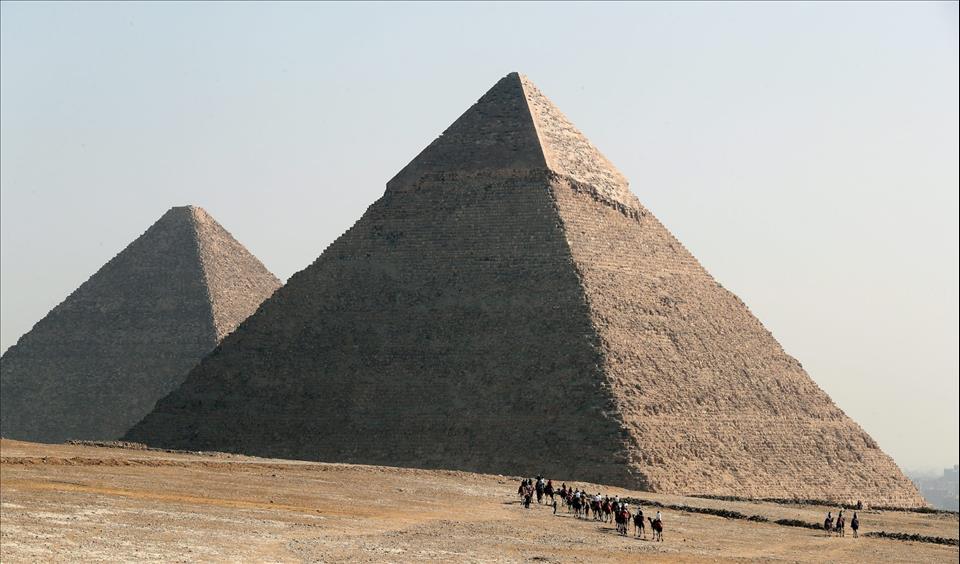
Curious Kids: In Ancient Egypt, Did Pyramids Really Have Booby Traps? Why Was Treasure Hidden Inside?
But unlike in the movies and comics – where pyramids seem to always have swinging blades, secret snakes, or sneaky poison darts – the real pyramids did not have dangerous booby traps .
Instead, the pyramid builders were very clever. They made the inside of the pyramids like a tricky maze . Imagine walking through tunnels that lead nowhere, with fake doors and dead ends.
This way, if someone tried to find the Pharaoh's burial chamber, they could easily get lost.
These confusing passages made it very hard for thieves to reach the mummy.
Sometimes, they even put huge, heavy stones to block off passages and stop anyone from getting inside.
These stones were so big and heavy one person could never move them alone, and even groups would have a very hard time getting past.
Blocking the way with huge stone slabs was a natural barrier that made the tomb difficult to enter without special tools or many people.
Also, sometimes there were deep holes or hidden pits but these were just simple obstacles – not deadly traps. The robber would walk out the way they came in; nothing was lethal.
They might have been meant to trip up or slow down robbers, rather than seriously hurt them.
The Egyptians also wrote curses.
These were scary messages painted or carved on the walls, saying that anyone who disturbed the tomb would be cursed with bad luck or punished by the gods.
The Egyptians believed strongly in their gods and thought these curses might protect the tomb by making robbers too afraid to enter.
While these were not physical traps, the curses acted like a kind of magic protection, using fear and belief to help keep the tomb safe.
There was no magic in these curses – just words.
Why was treasure hidden inside the pyramids?The ancient Egyptians believed that when a Pharaoh died, he would need all his personal things in the next life – food, furniture, clothes, jewellery, and especially gold.
Gold was not just used because it was valuable – ancient Egyptians believed gold was magical. Its bright yellow colour made people think of the Sun, and the Sun was linked to Ra, the supreme god who gave light and life to the world.
Gold was called“the flesh of the gods,” and using it in tombs and treasures helped connect the Pharaoh to Ra. They hoped it would help him live forever, just like the eternal Sun. By surrounding the Pharaoh with treasures, especially things made of gold, they believed he would be safe, strong and happy forever in the afterlife.
Some of these treasures were common everyday things, like beds, chairs and boxes so the Pharaoh could rest in the afterlife just like in real life.
Food and drinks, such as bread, fruits and wine, were there too, so the Pharaoh would never be hungry or thirsty.
Weapons and tools, such as daggers and chariots, were included to ensure the Pharaoh could defend himself and travel in the afterlife.
The walls were decorated with colourful paintings and writings telling stories about the Pharaoh's life and magical spells to keep him safe.
Finally, statues of gods were put inside the tomb to bring blessings, and keep the Pharaoh strong and protected.
Many pyramids had tunnels inside. AP Photo/Amr Nabil A serious crime
Stealing from a Pharaoh's tomb was a very serious crime and was forbidden. Because the tombs often held many valuable things, including gold and jewels, robbers were always trying to break in to steal these treasures.
But sometimes thieves got caught robbing tombs and were punished very harshly. The punishments for stealing from a Pharaoh were often severe; robbers could be beaten, have their hands cut off, or even be put to death, because stealing from the Pharaoh was a crime against the king and the gods.
Ancient Egyptian records, like the famous Tomb Robbers Papyrus (from 1110 BCE) talk about court cases where robbers admitted to breaking into royal tombs, such as that of King Ramesses VI.
This shows us that the Egyptians worked hard to protect their sacred mummies and treasures with strong laws.
So, the Pharaoh's sacred mummy was protected by clever tricks and scary words, not by the dangerous traps from the movies.
Anyone who tried to rob the tomb was taking a big risk because both the ancient police and the law were ready to punish them.

Legal Disclaimer:
MENAFN provides the
information “as is” without warranty of any kind. We do not accept
any responsibility or liability for the accuracy, content, images,
videos, licenses, completeness, legality, or reliability of the information
contained in this article. If you have any complaints or copyright
issues related to this article, kindly contact the provider above.


















Comments
No comment